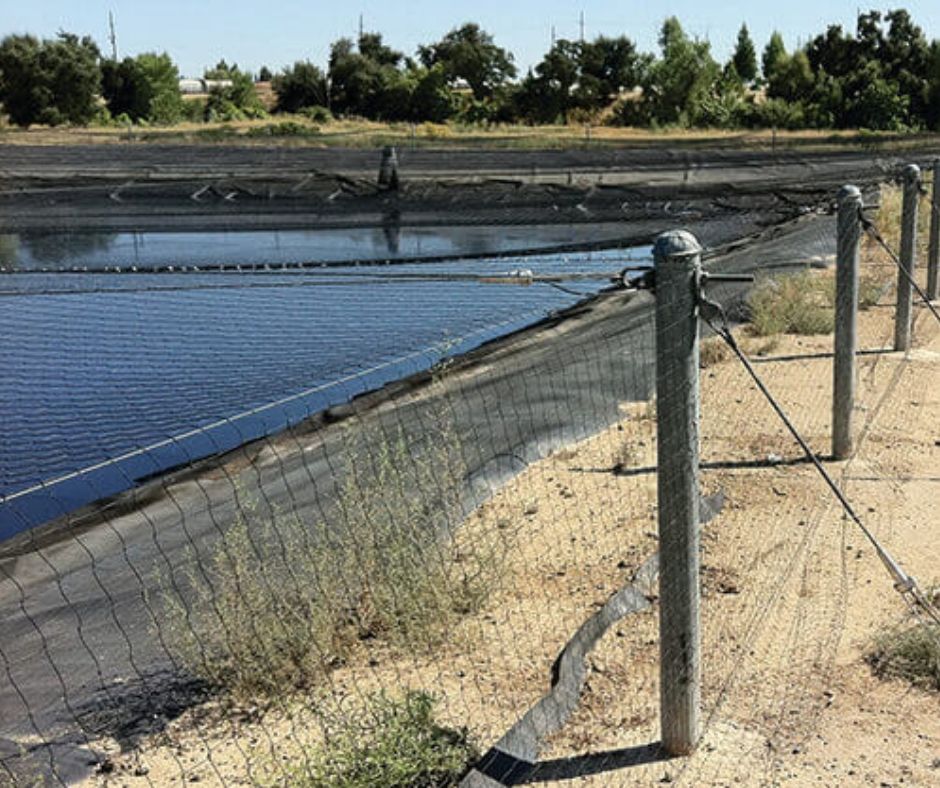
Birds can cause a significant negative economic impact on aquaculture. Birds not only eat fish but can also transmit diseases from one pond or aquaculture facility to another. Installing pond netting greatly reduces risks of disease, damage and crop loss
Commercial Pond Netting Installation for Bird Control
When it comes to controlling pest birds and other animals,
you may have few options. All wild birds, their nests, and eggs are protected
by the Wildlife Act of 1981, which prohibits you from using lethal force to
protect your crops or livestock. Birds, on the other hand, can sometimes adapt
to 'false threat' methods like visible deterrents and sonic devices. Therefore,
bird netting is the most effective method of securing an area.
What is Pond Netting?
Pond netting is a strong net barrier that can be easily
installed on ponds, fishery tanks, and pools of any dimensions to keep the
water clean and keep birds and other pest animals away. Pond netting is typically
used by industrial or agricultural operations to keep water clean and free from
debris or predators.
The right kind of pond netting should be durable and
suitable for fish breeding environments, as well as safe. Typically, pond and
bird netting will be installed by a professional
bird netting installation team, especially for industrial buildings, agricultural
sites, mills and fisheries.
Pond netting is ideal for any water collection area that needs
to be protected. It is often used in industrial environments where there are
chemical fluids – toxic or non-toxic – such as in oil refineries, mines, or
waste facilities. Pond Netting is suitable for covering tailing and retention
ponds and industrial sites.
Types of Pond Netting and their Benefits
There are several types of netting suitable for farms, ponds or industrial uses. Bird Netting and Leaf or Debris
Netting. Choosing the right netting is beneficial for the best outcome. Both
pond and bird netting are made of a dense polyethylene mesh with a similar
goal: to keep leaves, debris, birds and other wildlife out of a specific area
where they could cause harm to crops, pond life, or
other structures.
The majority of bird nets on the
market have a weave of about 20mm. Even though it's small, it'll effectively
block all the area's native bird species while still allowing ample room for
air flow and visibility.
Bird Netting
Bird netting is best used to exclude birds and other predators.
Industrial strength installed by professional bird netting company will do its
job to keep bird as well as raccoon and cats from getting near your pond or
fish. Industrial bird netting is made from materials such as nylon, polypropylene,
or polyester. Installing the correct size is key to effective bird exclusion.
Speak with a professional bird netting
company if you aren’t sure which size is right for your application.
Leaf Netting
The purpose of leaf netting is to collect fallen leaves and
other debris. Most brands use diamond-shaped mesh with openings no larger than
1.25" in diameter, and this mesh should be made of strong materials. Using
a mesh of less than 3/8" for leaf capture will allow the fish to eat the
leaves while still capturing them. Using a coarser mesh may be necessary if you
operate or live in an area with heavy pine needles or acorns. Those who are
keeping or raising fish that need sunlight should install netting that provides
the fish access to sunlight.
Should I have Pond Netting Installed?
If you operate a fish farm
or other agricultural farm that is depended on safe, predatory-free water
conditions, pond netting is essential. Pond netting is especially useful as a
barrier against avian predators in fish farms. Birds are a threat for fish
farming and fish reserves. Aquafarming is the intensive cultivation of fishes, mollusks,
and crustaceans, where conditions of the water are kept under control. Shrimp
farms are also an example of this kind of commercial fish farming.
Aquaculture pond netting blocks many species of seabirds
such as pelicans, cormorants, seagulls, egrets, herons, nuisance birds, birds
of prey and other predators.
Pond netting creates a safe barrier, preventing birds from
landing or polluting in the water and/or eating the fish. Pond nets also help
in maintain a safe environment in which the fish can develop.
How to Install Pond Netting Correctly
When using pond netting, ensure that the entire pond's
surface is covered and that there is sufficient clearance between the mesh and
the water's surface. A tight fit without gaps is best. Large ponds necessitate
the use of overhead netting installation or a support net to prevent the net
from sinking into the water.
Either support posts anchored into the pond, or a few
strands of rope tangled tightly across the netting are the most common methods
of accomplishing this. Use a fixed stake that is appropriate for the
surrounding soil type when anchoring. If the ground is particularly hard or
rocky, you may want to use a metal stake instead of a plastic one. Debris
accumulation can cause the net to break or dislodge anchor pegs if not regularly
removed.
Larger ponds, bodies of water or industrial applications
should resort to high quality debris or bird nets and should be installed by a professional
bird netting installation team.

